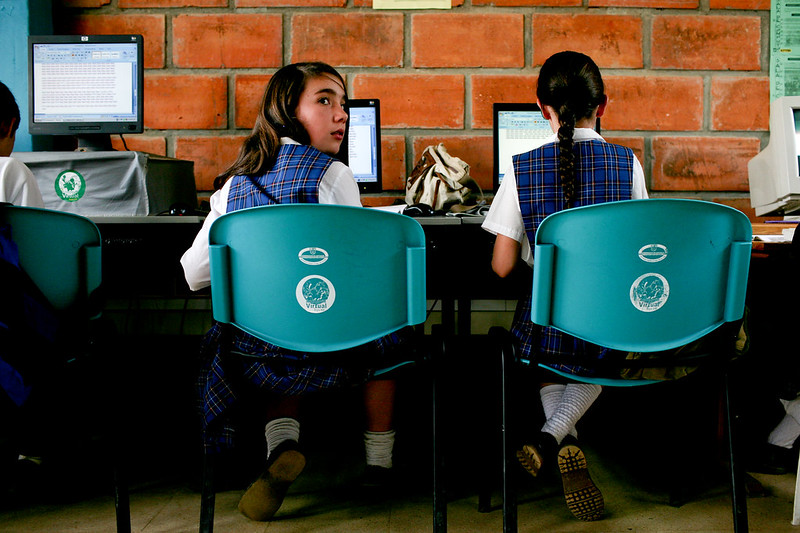You are here: American University Centers Latin American and Latino Studies Science and Technology Diplomacy in Latin America and the Caribbean

In the context of China’s rise and growing engagement with Latin America and the Caribbean, this project considers the role of science diplomacy as an important if neglected dimension of soft power projection in the region. With science an increasingly transnational and collaborative undertaking and the global knowledge economy ever more reliant upon advances in science and technology, from information and communication technologies or AI to robotic manufacturing or the health sector, scientific cooperation and technology transfer will be keys to 21st century geopolitical and economic competition. But, even as countries in the region have pursued a more multipolar foreign policy, we have given little systematic attention to assessing the impacts of international scientific cooperation in the context of this new era of great power competition.
This project compares U.S, Chinese, and E.U. scientific collaboration and technology transfer in Latin America and the Caribbean. It considers the similarities and differences of their respective approaches in terms of the goals, outcomes, and effectiveness of each, giving particular attention to the responses of regional governments and publics to scientific and technological outreach and cooperation by each actor.
Latin America and the Caribbean are increasingly important for China’s global ambitions, and its engagement with the region has expanded dramatically over the previous decade. Trade with China has grown steadily, and Chinese diplomatic influence has also increased. Twenty-one countries in the region are now part of China’s signature Belt and Road Initiative. While China’s interests in and approach to Latin America and the Caribbean have been dynamic and evolved over time, infrastructure investment and technology transfer have been notable hallmarks. In recent years countries across the region have partnered with China to receive Covid vaccines, build more hydroelectric power, improve their digital infrastructures and telecommunications systems, launch satellites, advance national space programs, and develop new industries such as lithium. Previous research on Chinese soft power in the region, however, suggests an uneven picture. While regional publics recognize the economic importance of China for Latin America, the country’s relative influence in other arenas of public life is less clear.
The United States has long assumed its status as this hemisphere’s dominant geopolitical and military power, and traditionally has engaged with Latin America and the Caribbean on that basis. With China’s rise, the region has become a notable battleground in the great power rivalry between the U.S. and China, with the U.S. viewing China as an unwelcome competitor in its sphere of influence. And yet despite China’s growing involvement with Latin America, the U.S. has not made comparable investments in the region, and is often perceived as inattentive, absent, or unreliable. Nevertheless, research suggests that regional publics still view U.S. soft power as positive and desirable and public opinion still understands the U.S. as the most consequential country for the region.
One bright spot of U.S. public investment in Latin America has been long-term science and technology cooperation in such areas as astronomy, meteorology, polar research, and more recently, biodiversity and marine conservation and the clean energy transition. Also important has been foreign direct investment by U.S. corporations, which has been instrumental for the recent growth in Latin America of such industries as fintech and ecommerce, streaming services, pharmaceutical and software development. But as yet we know little about how U.S. public-private science diplomacy might influence its soft power standing in the region.
In contrast to the largely bilateral approaches of both China and the U.S., the E.U.’s science diplomacy with Latin America and the Caribbean has primarily been at an interregional level. In recent decades the E.U. has initiated high level regional dialogues, forged agreements around scientific and technological cooperation, knowledge exchanges, and joint initiatives consistent with U.N. sustainable development goals. It’s goal has been to create an E.U.-Community of Latin American and Caribbean States (CELAC) Common Research Area to pursue cooperation in such areas as the health and marine sciences, decarbonization and renewables, and innovation cities, among other topics. European scientific expertise is viewed favorably by their Latin American counterparts. However, given evident asymmetries in these arrangements, including dependency on E.U. funding and a lack of follow-through on agreements, it remains to be seen what the long-term impacts of the E.U.’s approach might be.
This project is led by CLALS Research Associate Professor Rob Albro and Research Fellow Jaime Baeza Freer, also a Professor of Government at the University of Chile.
- China-Latin America: Literature Shows Varying Perspectives on Beijing's Intentions
- China's Campaign for Brazilian Hearts
- Confucius Institutes: Building a Capacity for Business with China
- Latin America: China's Huawei Maintains its Foothold
- U.S.-Southern Cone: Looking at Relations Through a Different Optic
- China in Latin America: Influential, but Not Liked
- China in Latin America: Exaggerating Medical Diplomacy
